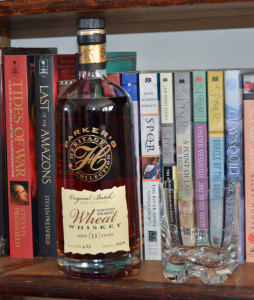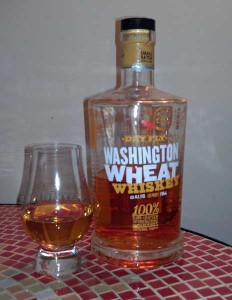In The Midst Of The Bourbon Boom And The Rye Revival, All Eyes Are On American Malts As “The Next Big Thing.” What Happened To Wheat Whiskey?
By Richard Thomas
When Heaven Hill introduced Bernheim Original Wheat Whiskey in 2005, I first took note of it during a visit to My Old Kentucky Home, and the novelty immediately caught my eye. Consequently, I picked up a bottle right then and there, and was not disappointed with the contents. That was in the time when you could still get on a waiting list to buy a bottle of Pappy Van Winkle, so nowadays, when just about everything connected to whiskey is trendy, that memory of Bernheim’s release begs the question “why didn’t wheat whiskey take off?”
The Basics
The distinctions in the major types of American Whiskey flow from the majority grain in the mash bill, since they all have similar rules regarding maximum distillation and barrel entry proof, as well as regarding what that barrel must be. Bourbon is 51% or more corn, and wheat whiskey is 51% or more wheat.
In bourbon, wheat serves as one of the two “flavoring” grains. Whereas rye adds a spicy character to the whiskey, wheat gives it a softer and more floral aspect. So, just as rye whiskey is known for leaning more heavily into that spicy flavor profile because the rye content is in the majority, so wheat whiskey stands squarely in that sweeter and more floral territory, alongside its dominant grain.
So Why Not Wheat Whiskey?
Given the popularity of “wheater” bourbons like Pappy Van Winkle, Maker’s Mark and W.L. Weller, coupled with the craze for rye earlier this decade that caused a genuine shortage of even staple rye whiskey brands, it is more than a little surprising that wheat whiskey hasn’t become a bigger thing. After all, the category revival began more than a decade ago, and it should have a ready-made, friendly entryway for bourbon fans. Instead, it looks like if there is a next big thing in American whisky, it will be American malts.
The answer as to why wheat whiskey didn’t take off in the same way as rye whiskey is simple enough: although some whiskey drinkers discovered and adopted rye, and indeed continue to do so, the main engine for the growth of rye has been the adoption of its robustly spicy profile by chic mixologists.
As to why malt whiskey seems better poised than wheat whiskey to break out, that might be because more companies have been pushing it, giving it a bigger profile. Early craft entrants like Balcones and Stranahan’s staked claims with their American malt whiskeys, and other micro-distilleries such as Santa Fe Spirits, House Spirits and Westland have all made malt whiskey the core of their portfolio. Many, many more craft distillers have introduced an American malt into their spirits lines, even if that whiskey doesn’t occupy the center stage.
By contrast, relatively few micro-distillers are following the wheat whiskey beat. For example, Tennessee’s Corsair Artisan (whose best-known whiskey is arguably a triple-smoked American malt) makes a smoked wheat whiskey, which it describes as part of a “pretty rare” sector. Ohio’s Middle West Spirits makes their OYO Oloroso Wheat Whiskey, finished in Sherry casks, Montana’s Roughstock Distillery has a wheat whiskey, and there are some others. Without a doubt the best known of the craft wheat whiskeys are the ones made by Washington’s Dry Fly Distilling.
Yet if wheat whiskey lacks the presence in the craft scene that American malts do, it does have one of American whiskey’s big boys in its corner: Heaven Hill. Having introduced Bernheim Original in 2005, they put a seven year age statement on it in 2014, and this at a time when age statements were beginning to frequently drop off whiskey labeling. In that same year, the annual Parker’s Heritage release was a cask strength, 11 year old wheat whiskey, presumably drawn from some of the earliest wheat whiskey stock laid down by Heaven Hill.
One thing to keep in mind is that whenever you see a lot of big stories in the major media about “the next big thing,” they might turn out to be true, but when it does it’s because many followed that advice and went straight to it. What the smart enthusiast is looking for is the sleeper, the thing that gets discovered rather than hyped, and American whiskey’s next sleeper might very well be its wheat whiskey.
 The Whiskey Reviewer A World of Whiskey, Poured Every Weekday
The Whiskey Reviewer A World of Whiskey, Poured Every Weekday



Would it be safe to say that wheat whiskey tends to benefit more from extended stays in the barrel? Longer aging may not play well in may corporate boardrooms when other grain whiskeys can be made quicker?